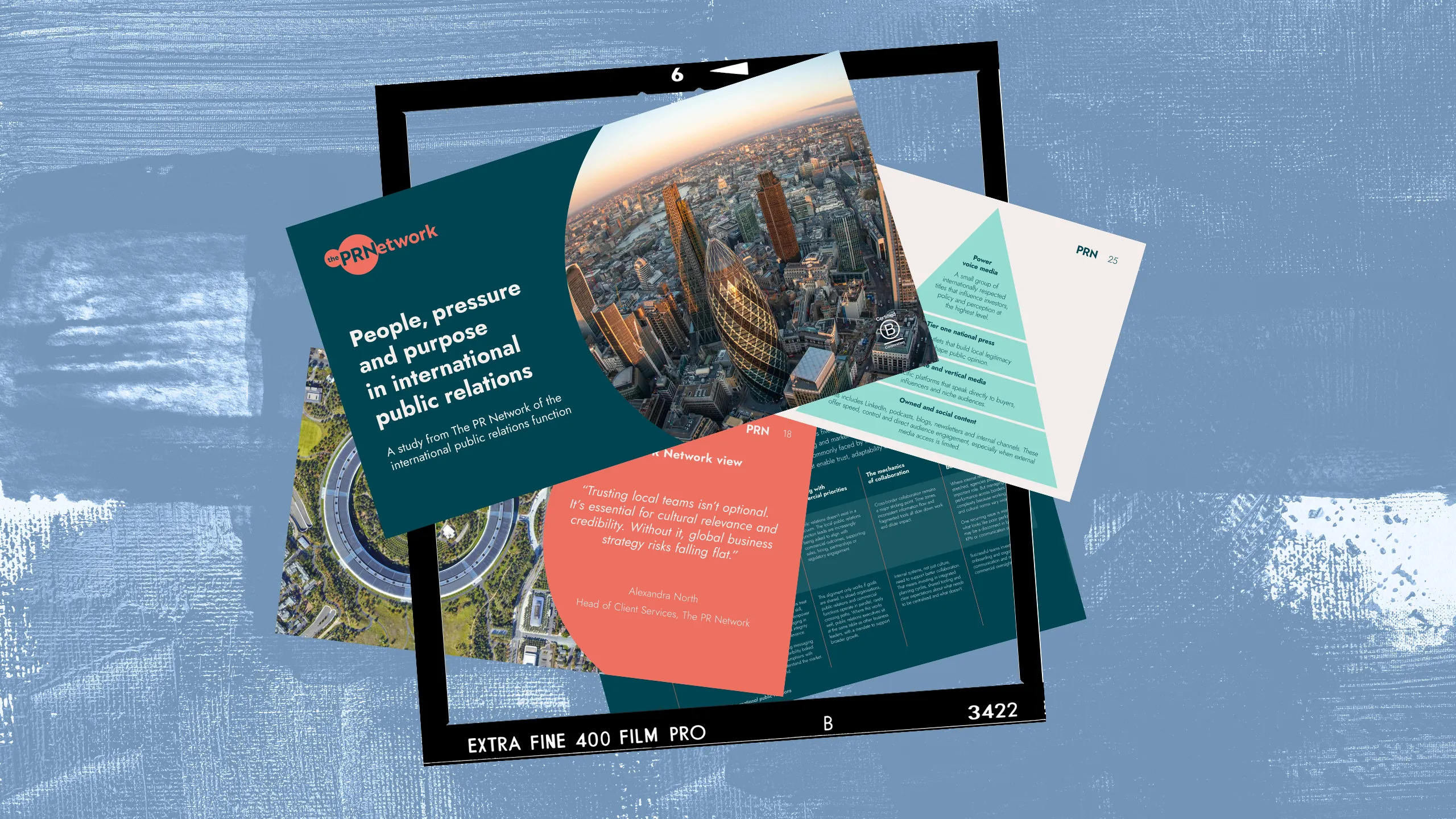International comms leaders must learn to properly trust their local colleagues, ensure that their function is structured appropriately and become more systematic about upskilling those teams, a new report argues.
These are some of the key takeaways from People, pressure and purpose in international public relations, published by UK-headquartered global comms agency The PR Network.
The report also suggests five methods for measuring and evaluation communication in a way that “moves beyond noise and towards value”, and helps remove the “disconnect between performance and perception”.
It is based on in-depth interviews with 25 senior global PR and corporate communications leaders from tech, consumer and professional services brands including Accenture, Cisco, Mars Petcare and others, and was written by The PR Network co-founder Georgina Blizzard and industry veteran Stephen Waddington.
One dilemma described in the interviews was the risk that local insight is overlooked or overridden in the name of global consistency. From their discussions on global/local interfaces, the authors identified five pillars of international public relations. They are:
- Trust as the foundation for effectiveness – with global leads treating local insight “as strategic input, not operational feedback”, and giving local voices influence rather than just providing instructions
- Culture beats control – recognising that messaging that works in one market may backfire in another, and empowering local teams to adapt it in ways that “preserve brand integrity while achieving local relevance”
- Aligning with commercial priorities – ensuring that PR and commercial functions come together at the same table, rather than being siloed
- The mechanics of collaboration – overcoming barriers to cross-border collaboration, and be clear about what needs to be centralised, and what doesn’t
- Managing agency performance across borders – this means taking time to actively support an agency, rather than providing commercial oversights
Four possible structures
The report goes on to acknowledge that there is no single, silver bullet for how to structure a global comms team, but identifies four different potential structures, which it calls the centralised; hub-and-spoke (regionalised); best-in-class networks; and hybrid models.
The report explains that respective pros and cons of those structures mean that some are better suited in certain contexts, budgets, and market maturities – for example, in a newer market, you may want a model with more centralised strategic oversight, while an established region may need more autonomy.
It also says: “A common theme among high-performing teams was their ability to adapt. Few were working within a rigid playbook or structure. Instead, they operated with clear principles, central strategy, local execution and shared learning, but varied how this looked by market.”
Dreams – or nightmares?
The PR Network’s 25 interviewees were asked what professional issues kept them awake at night. The report summarises responses into three areas:
- Embedding strategic value. Interviewees expressed frustration at playing critical roles in business decisions without receiving the recognition, job titles, reporting lines and remuneration they felt they deserved as a result. The report argues that international comms leaders must argue for a “more integrated presence at leadership levels and a mandate to advise, challenge and steer”
- Redesigning roles for resilience. The report urges that it is “no longer enough to talk about burnout or overwork as side effects of ambition”, and says that PR functions must be rethought in order to ensure the discipline is sustainable. “Wellbeing can no longer be treated as optional,” says the report, highlighting the pressure for international practitioners to “follow the sun” and work long hours
- Skills for tomorrow’s communicator. With interviewees speaking of the challenges of staying ahead of tech, AI and other advances alongside managing the day-to-day, the report urges that upskilling in PR “must become systematic, not opportunistic”, with learning embedded into roles.
‘None of these measures is perfect. But…’
“Measurement has always been a point of tension in public relations,” the report says. “Practitioners know that outputs are not outcomes, yet too often they’re still judged by legacy metrics that don’t reflect the strategic value they deliver.”
Given this, The PR Network suggests five measurement fields which are more relevant than outdated AVEs (advertising value equivalents) and other output metrics.
The first is “tiered targeting”, which focuses on measuring success relative to the importance or role of a communications channel used.
It is followed by the self-explanatory “message pull-through”, and then “salience over sentiment”, which prioritises on whether the audience actually remembers and acts on the message. There is also “pipeline alignment”, which connects communication efforts to business outcomes, while the fifth and final is “digital attribution”, meaning the use of analytics tools.
“None of these measures is perfect,” the report cautions. “But together, they build a picture that moves beyond noise and towards value.”
As Georgina Blizzard, co-author of the report and co-founder of The PR Network, comments: “Public relations strategy is no longer about coverage or reach. It’s about relevance, credibility and trust in the right networks.”

